NatureWatch is our land-based citizen science program.
We train community volunteers to collect important information about Victoria’s animals and plants.
We work with local groups, scientists and land managers to make sure our projects have community value, are scientifically valid and match local management priorities.
Our hard-working NatureWatch volunteers:
- Monitored wildlife survival across East Gippsland after the 2019 bushfires
- Surveyed for Southern Brown Bandicoots in new urban developments around Cranbourne
- Tracked changes in urban population Growling Grass Frogs in Epping
- Recorded thousands of hours of bird calls to monitor populations across many parks
- Monitored the post-bushfire recovery of Southern Brown Bandicoot habitat in Bunyip State Park
- Photographed Brush-tailed Phascogales in Wombat State Forest
- Stagwatched Greater Gliders in Victoria’s central highlands forests
- Collected 10 years of data on Phytophthora dieback impacts on grasstrees in Brisbane Ranges National Park
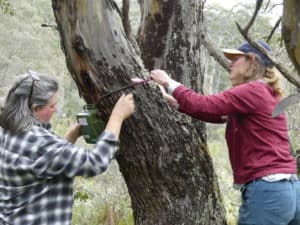
Get involved
Joining a NatureWatch project is a fun and important way to contribute to nature conservation in Victoria.
Want to learn about our projects or find out about how to get involved with NatureWatch? Take a look below.
NatureWatch has been going since 2007 – check out our history here!
Read the latest NatureWatch updates here.
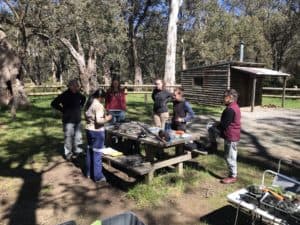
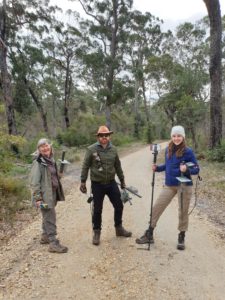
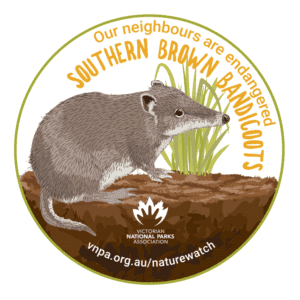 We are back in Bunyip State Park in 2022 with a new and improved wildlife monitoring project!
We are back in Bunyip State Park in 2022 with a new and improved wildlife monitoring project!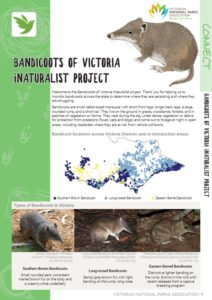
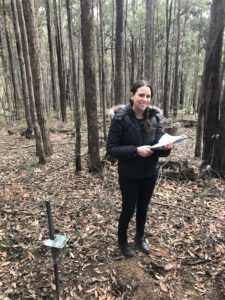
 They’re cute, curious – and caught! From 2012 to 2021, we used motion-sensing cameras to monitor wildlife in our Caught on Camera program. Projects ran for ten years in Bunyip State Park and Wombat State Forest and a few years in Macedon Regional Park, and the Wimmera region.
They’re cute, curious – and caught! From 2012 to 2021, we used motion-sensing cameras to monitor wildlife in our Caught on Camera program. Projects ran for ten years in Bunyip State Park and Wombat State Forest and a few years in Macedon Regional Park, and the Wimmera region.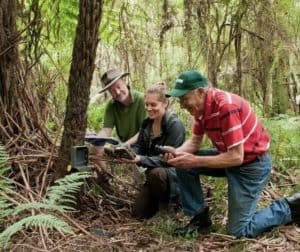
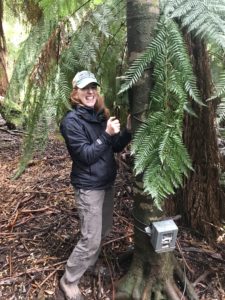
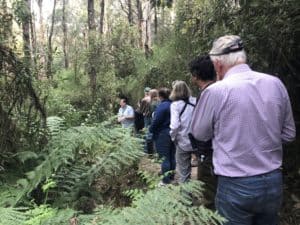
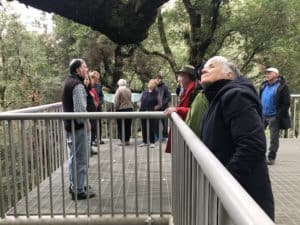
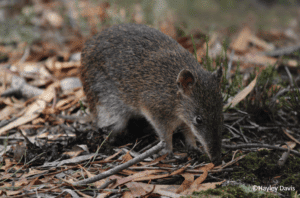 Some Victorians are lucky enough to have endangered Southern Brown Bandicoots living in their neighbourhood! In our new ‘Backyard Bandicoot’ program we teamed with bandicoot researcher, Dr Sarah Maclagan and the Royal Botanic Gardens Cranbourne to monitor bandicoots in neighbourhoods around the gardens and in new residential developments.
Some Victorians are lucky enough to have endangered Southern Brown Bandicoots living in their neighbourhood! In our new ‘Backyard Bandicoot’ program we teamed with bandicoot researcher, Dr Sarah Maclagan and the Royal Botanic Gardens Cranbourne to monitor bandicoots in neighbourhoods around the gardens and in new residential developments. NatureWatch doesn’t just watch nature, we listen to it too! You’re probably familiar with the laugh of the kookaburra, warble of the magpie and screech of the cockatoo. But did you know that recording bird calls can tell scientists and land managers a lot about Victorian birds? VNPA teamed up with Museums Victoria to record bird calls and help build that critical knowledge.
NatureWatch doesn’t just watch nature, we listen to it too! You’re probably familiar with the laugh of the kookaburra, warble of the magpie and screech of the cockatoo. But did you know that recording bird calls can tell scientists and land managers a lot about Victorian birds? VNPA teamed up with Museums Victoria to record bird calls and help build that critical knowledge. Grasslands are home to many threatened species that need careful monitoring if we are to ensure their survival. Between 2009 – 2017, our volunteers watched for golden sun moths flying, listened for growling grass frogs calling, and searched for very rare plains yam daisies. This is making an important contribution to nature conservation in Victoria.
Grasslands are home to many threatened species that need careful monitoring if we are to ensure their survival. Between 2009 – 2017, our volunteers watched for golden sun moths flying, listened for growling grass frogs calling, and searched for very rare plains yam daisies. This is making an important contribution to nature conservation in Victoria.